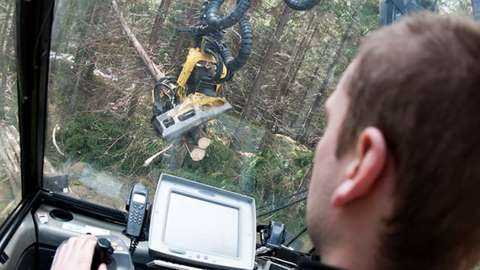Replace safety windows in time

The safety windows on forestry machines constitute an important protective barrier that is designed to protect drivers from foreign objects entering the cabin. For harvesters, it is primarily the front window that gets damaged in incidents. The work tasks that are particularly vulnerable are processing, when the logs unintentionally hit the cabin, and felling, especially when there is a risk of being hit by falling dead trees and tree tops.
For forwarders, the front window is most susceptible to damage in incidents, but side and rear windows are also exposed. The greatest risk occurs during loading, when timber falls out of the grapple, but also during driving with a full load when slippery timber can slide over the tailgate and hit the cabin. It is also not uncommon for incidents to occur during unloading/tipping, when timber falls out of the grapple.
It happens that windows break, sometimes even in situations where they are expected to hold. The causes and extent of this problem are not known. Therefore, a survey was conducted. The results of this survey show that it affects almost all machine manufacturers and that both harvesters and forwarders are affected to a similar extent. Replacements due to aging and wear mainly occur after approximately ten years, while replacements due to incidents also affect newer machines. The analysis has not been able to identify previously unknown risk factors, but has provided a better basis for quantifying them.
Read more about the risk factors and how to manage them in the report Replacement of safety windows

